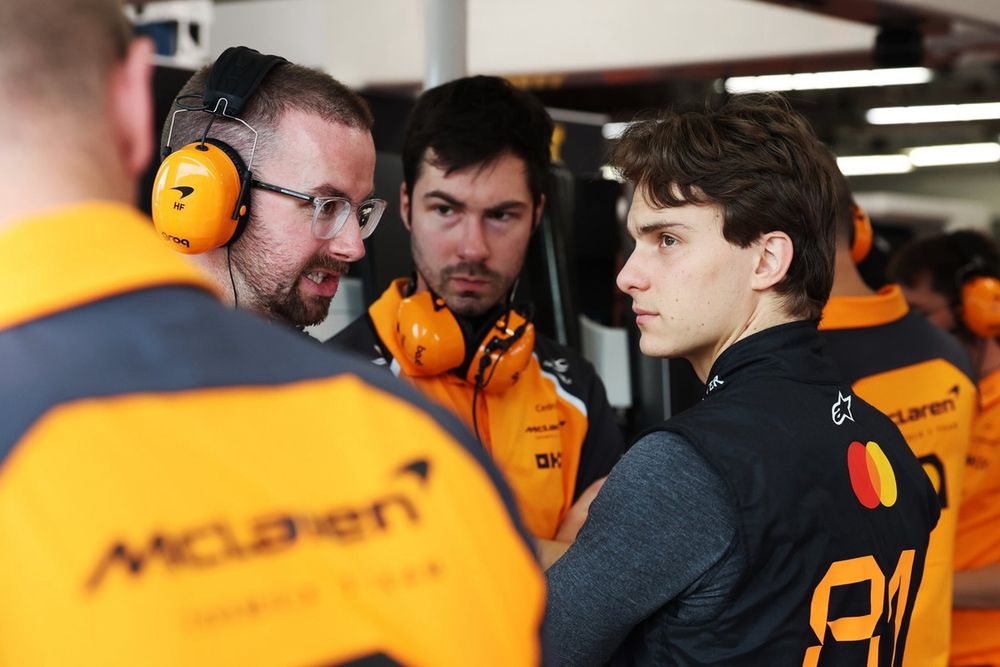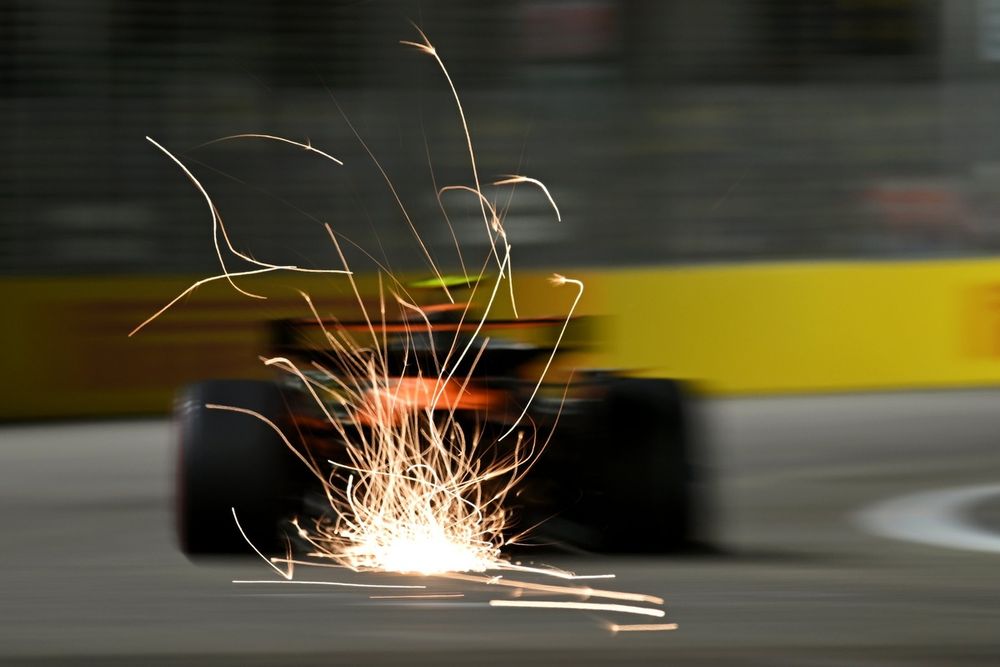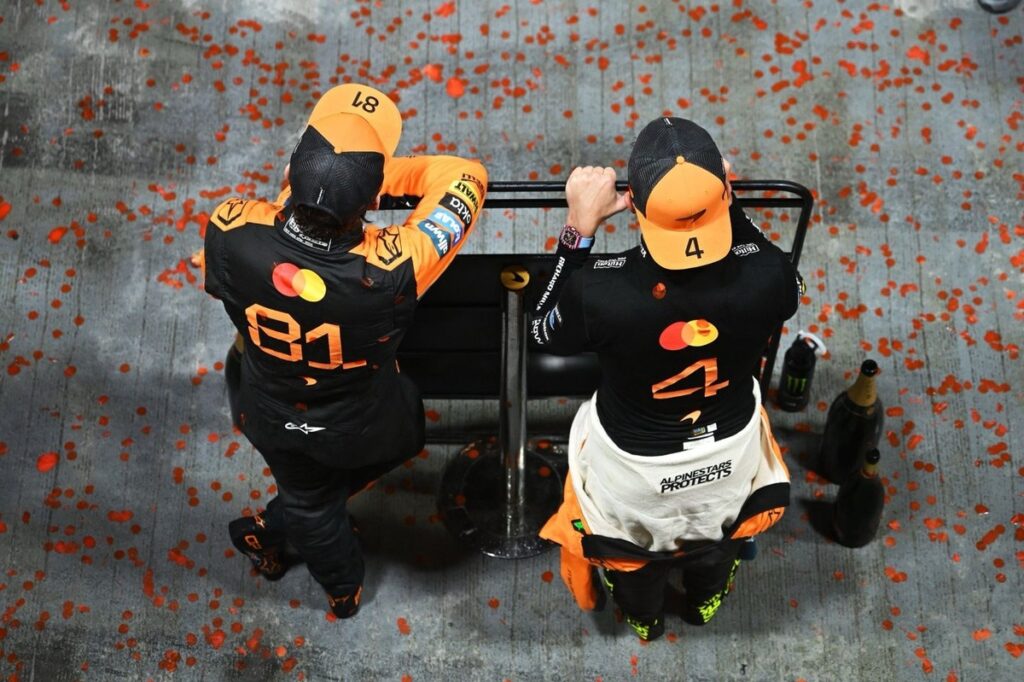The occasional friction between Oscar Piastri and Lando Norris, and their McLaren team, last year was a mere taster for what has already transpired in 2025 – and what is still to come. Max Verstappen might be creeping up incrementally, but the battle for the Formula 1 drivers’ title is the McLaren drivers’ to lose.
So, unlike last year, where Norris was chasing down Verstappen’s lead in the second half of the season while McLaren struggled to juggle its philosophy of equality with the practical need to prioritise Norris over Piastri, this is a showdown between the two McLaren drivers.
It has thrust Piastri and Norris into a situation they have never experienced before. Tensions and pressures are inevitably bound to rise, putting McLaren’s internal rules through the ultimate load test.
The showdown is approaching and, as is natural, the pressure will increase. In the first 17 races of the season, McLaren has managed its drivers impeccably, smoothing out such frictions as they arise and successfully maintaining the bond of trust with both Norris and Piastri. The now-famous ‘Papaya Rules’ have so far worked with the same efficiency as the MCL39, allowing the team to celebrate its second consecutive constructors’ championship with six races (and three sprints) to spare before the end of the season.
However, there is still a challenge McLaren must face – a test that begins now, or perhaps already began last weekend in Marina Bay. In Formula 1, every aspect is pushed to the limit; the challenge is to make everything operate at its maximum – there are no half-measures.
Margins for tolerance do not exist in this category of motorsport; the imperative is to extract every last drop of performance.
Lando Norris, McLaren, Oscar Piastri, McLaren
Foto di: Sam Bloxham / LAT Images via Getty Images
This premise helps place the ‘Papaya Rules’ in context: a set of guidelines requested of the drivers (and others) by McLaren’s new era – a sort of code of conduct based on fair play, designed to allow the drivers the freedom to race.
In practice, Norris and Piastri have two entities watching over their on-track behaviour: the panel of race stewards, and also the team itself, which evaluates and makes decisions, as we have seen on several occasions this year and last. Up to this point it has been successful so far as the team is concerned, for the drivers have done its bidding and the constructors’ title is in the bag – but the ultimate test, the one that will truly challenge the system, begins now.
The history of F1 teaches us that the toughest clashes occur when two championship contenders reach the decisive phase: the point of no return, when there is no longer time to recover. When a driver reaches the final stretch fighting for a world title, the tolerance bar often rises; there are numerous examples of drivers who, in pursuit of their goal, have resorted to tactics and manoeuvres that went beyond what is considered acceptable.
At the risk of inflaming the fan community, let’s name a few: Michael Schumacher on Jacques Villeneuve at Jerez in 1997, and on Damon Hill in Adelaide in 1994; Ayrton Senna on Alain Prost at Suzuka in 1990.
Equally germane, especially in the context of Singapore, is the example of the 1989 Japanese Grand Prix in which Senna and Prost, then team-mates at McLaren, came together at Suzuka’s chicane.
“Senna – has he got something up his sleeve or is he going to try something desperate?” James Hunt had mused on the BBC commentary just moments earlier.
It was very much the latter. The physics of the manoeuvre were simple: Senna made a late lunge on the inside line which required Prost to let him through or they would crash.

Oscar Piastri, McLaren
Photo by: Steven Tee / LAT Images via Getty Images
“Every time we start our conversations with the drivers we always remind ourselves, as a premise, this is hard,” said team principal Andrea Stella in Singapore.
“Because this is the only matter in which when you race together as a team, actually you can’t have exactly the same interest for the two drivers, because they want to pursue their aspiration.
“And this is a foundational principle of the way we go racing at McLaren – we want to protect this ‘let them race’ concept. We know that as soon as you adopt this concept you face difficulties. Within this awareness, you need to be thorough and you need to have integrity in approaching that.
“I’m very proud of the way Lando and Oscar have been part of the process so far because if we have been able to navigate through this, let’s say, difficult part of going racing, it’s because we have Lando and Oscar onboard. They’ve been great contributors and that’s why it’s been successful so far, and definitely we will work hard to make this is true for the remainder of the season and the years ahead.”
The hardest part – the true stress test of this internal regulation – begins now. In the upcoming races, there could be events beyond the team’s control which might affect the overall standings, but everyone hopes to witness a finale in which Piastri and Norris battle each other point by point, all the way to the chequered flag at Yas Marina.
In terms of pressure, the closer we get to the end of the season, the more electric the atmosphere will become. The drivers will start racing with not only each race result in mind, but above all the championship points – which will inevitably become the sole real objective.

Lando Norris, McLaren
Photo by: Sam Bagnall / Sutton Images via Getty Images
In this context, applying the ‘Papaya Rules’ could prove far less straightforward than what we’ve seen so far. Imagining a repeat of what happened in Monza – when Piastri obeyed team orders and gave up his position to Norris – in a hypothetical (but possible) season finale in Abu Dhabi is far from guaranteed.
It will be an important test for the philosophy behind the ‘Papaya Rules’ because trust here is multi-dimensional: Piastri and Norris must trust each other on track, and they must also trust that the team is acting in total fairness.
In the case of Prost and Senna at McLaren, the relationship breakdown was total because first they ceased to trust each other, then each began to suspect the team was favouring the other.
“We need to retain a higher degree of sophistication and detail because there’s so many elements you need to take into account,” explained Stella. “And we need to make sure we don’t become too quick in drawing conclusions, we need to be accurate because there’s a lot at stake – not only the championship points but also the trust of our drivers in the way we operate as a team.
“And this, if anything, is even more foundational than the points themselves, so we will apply all the accuracy that is required in this case and all the conversations that are needed.”
We want to hear from you!
Let us know what you would like to see from us in the future.
Take our survey
– The Autosport.com Team
Read the full article here

